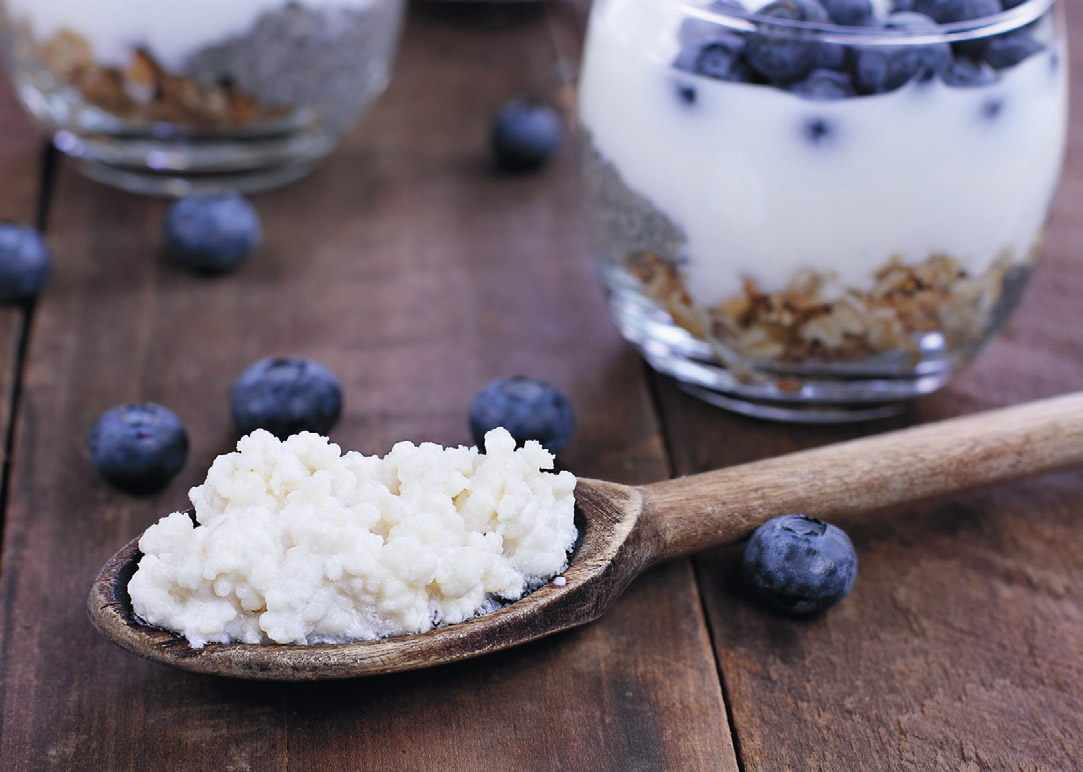Milk Kefir
A personal testimony
After initiating a study through Slow Food Ventura County, designed to examine the benefits of fermented foods on the human gut microbiome, my kitchen counters and refrigerator became a parking spot for many a decaying food item: kombucha, sauerkraut, fermented chutney, pickles, natto, beet kavas, curtido, Sheijeni mushrooms, salami, koji, Moroccan carrots, kimchi and kefir cheese. Across three weeks of eating and microbiome testing by the 50 participants, the item most requested to be replenished was the kefir cheese, seasoned with the simplest of herbs and sea salt. This unfamiliar ferment rightfully stole the show.
Near the end of our study I underwent a shoulder surgery. Necessary surgical and maintenance antibiotics wiped out my previously stellar gut diversity. In the current state of microbiome research, a high diversity score is considered one of the most meaningful benchmarks of a healthy gut. Because of the series of gut samples I had collected for the study over several months, it was easy chart this demise. The atomic blast of antibiotics had done their job; the results from microbiome testing company, uBiome, pronounced a mere 18% score in my gut diversity— down from my pre-surgery high of 82%.
It was time to eat my way back to a healthy gut.
Enter kefir again, but this time as an astoundingly effervescent, soured milk treat supplied by a friend in an icy cold, one-quart Mason jar. It was a momentous first sip. Something completely new to the senses—and undoubtedly beneficial. Close by were the Nigerian goats responsible for the raw milk substrate, lounging in the hot, dusty Ojai farmyard. Seen through the broad framework of microbial life, this meant that in addition to the graceful job of fermenting provided by the complex of kefir grains, the diversity benefits of the second-hand raw milk communities would also be abundant.
My gut restoration would get a big boost from the barnyard, but I realized I needed to learn the art of kefir making.
After working with an experienced home kefir maker, I could see that the bare-bones action needed to make a kefir is to simply expose raw milk to kefir grains. The grains will act upon the milk and begin the alchemy of fermentation. As you pour the milk off and into its own container, the fermentation continues.
Refrigeration slows the fermentation process down some, but not completely. Additional time in the fridge consistently yields the effervescent, soured drink that marks kefir’s addicting character.
I’m proof positive of the benefits. My gut diversity score three months after my surgery was 100%. I arrived at the top of my class with the help of that powerful and beneficial partner.





